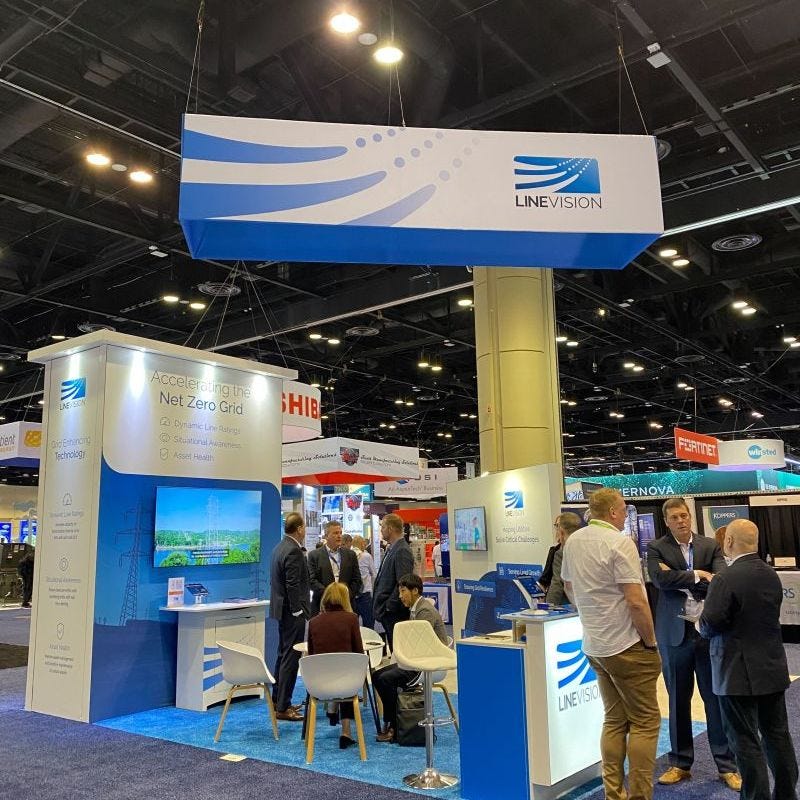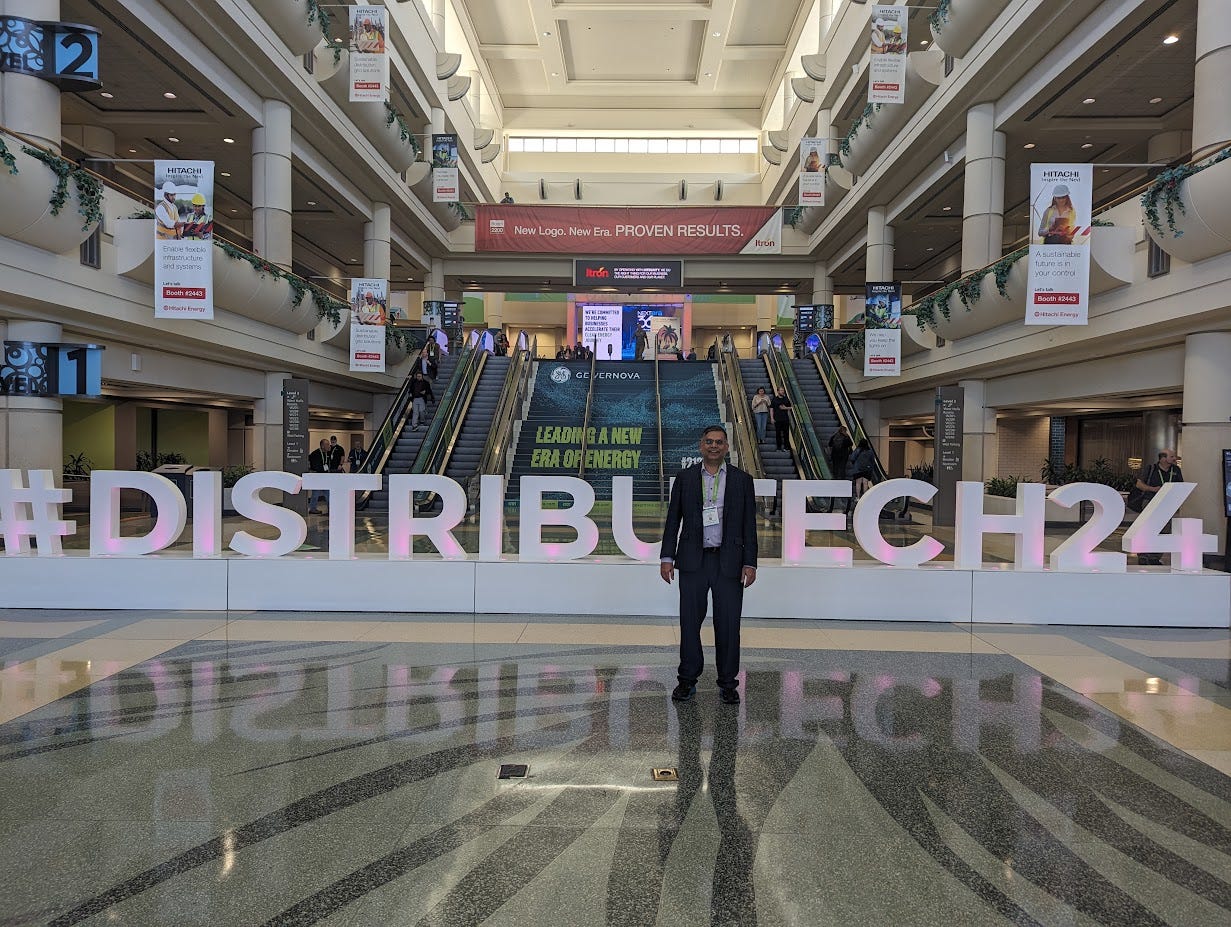Notes from attending DistribuTech 2024
There were nearly 17,000 attendees and I have never seen this much distribution utility presence.
Source - Tim Stelzer on LinkedIn.
This Orlando DistribuTech is the second time I attended this conference. There were 17,000 people at this event. Next year, it is going to be in Dallas, Texas. DistribuTech is like the Mother of all Conferences, as far as I am concerned. There are SAP, Siemens, Oracle, Landis & Gyr, and Itron to mention a few. The electric utilities get the most out of it. I made a point of asking people I ran into (whom I knew from before) whether this was a good conference for them to get clients, and I heard confirmations from most of them.
Source - Rao Konidena.
But spending 3 nights on the road is a bit too much for me as I lost the practice. I walked like 6-7 miles every day from the hotel to the Orange County Convention Center and on the exhibition floor. I am just tired and glad to be back home. But I wanted to share these notes while they are fresh in my mind.
Thanks to my current clients, I did not have too much work that needed to be turned in while I was on the road.
The first thing I did at this conference was attend a workshop given by 5 Australian distribution utilities about how they are meeting net zero goals. The things that I learned that could be applied to our utilities include –
Australian utilities reduced voltage at substations to increase the amount of rooftop solar integration so that they don’t have any reliability and system protection issues.
The distribution utilities talk to each other regularly and exchange notes about the energy transition.
They mentioned that customer flexibility is the key, and they reward customers for that flexibility.
Smart inverters are mandated in Australia. Many of our states are still in the wishy-washy stage. Smart inverters allow more rooftop solar.
Rooftop solar permitting is easy in Australia, and it takes days, not years. I wish our state regulators listened to this aspect.
The rooftop solar cost is only $1 per watt. Here in the US, it is $3 per watt.
When asked about barriers in Australia, the distribution utility executives mentioned smart metering. Only 30% have smart meters in Australia.
Australian utilities also have a 5-year revenue cap. That’s not good.
When asked about backfeed and reverse flow in the substations and transformers, the executives mentioned that it was not a problem for them in Australia.
They are thinking about putting batteries in the community, like a community-owned battery, for reliability and resiliency purposes.
It's a small world – I ran into 2 more folks from Minnesota on a morning breakfast panel (details later). Running into people from back home is a common theme at this conference. I also ran into a couple of my ex-colleagues. It was nice to see them after quite a while. I also saw there was too much energy because there were more than 15,000 people at this conference. I even heard my mother tongue spoken in the hallways because some of the attendees were from Hyderabad or working for a top IT consulting company. I had interesting conversations while walking to the venue from the hotel. It was all around a good conference, but like always, I am more keen on learning new stuff, and there I was disappointed a bit with the presentations I sat on.
Source - ConEdison.
In the morning, I moderated a breakfast panel, and that was semi-good. The people didn’t show up on time and didn’t contribute that much to the topic at hand, which was demand response in a net-zero world. But all of them did show up, so that’s the good news, I guess. Without attribution to company names, I was glad to hear from one of the utility panelists that demand flexibility should be compensated. One of the panelists was the CEO of a storage company, and I felt that he tried to monopolize the conversation. I wish we could have more robust discussions.
I listened to one presentation, “Unlocking Flexibility in Local Markets: Insights from Recent Pilots and BeyondWed” that mentioned the Canadian experience and had some good content. The presenters were knowledgeable and had some good specific points about the Canadian government supporting pilots with the distributors. But, I walked away with the feeling that these lessons cannot be applied to the US context because it is a different structure.
Source - Andrea Nuesser, Hydro One.
I sat in on a presentation regarding CAISO FERC Order 2222 and was disappointed because the presenter talked high level and did not talk about specifics. The presenter did not give the full picture of the Order 2222 proposal filed by CAISO and discuss the multi-nodal aspects that CAISO allows, the 60-day clock that CAISO does not have and other details. It was a very high level, which is why it was so frustrating to listen to the presentation.
I had high hopes of listening in on a presentation regarding SPP and Evergy’s demand response aggregation. Again, I was disappointed because the Evergy presenter changed jobs and didn’t show up. As a result, the remaining presenter ended up talking in general about FERC Order 2222 and made a marketing pitch about their offering.
I also listened to another panel about whether we could reach 100% renewables or not. Here, there was some good information, but again, it was all a bit company philosophy. The presenters did not take a position and explain their position with facts. Rather, they spoke in general about their company plans.




